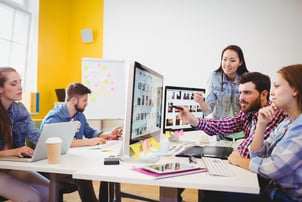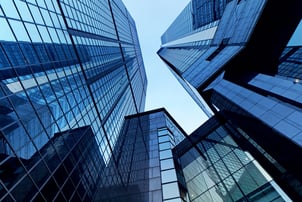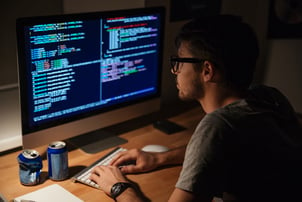Creativity & AI: Creating Digital Products in the Era of Generative Solutions
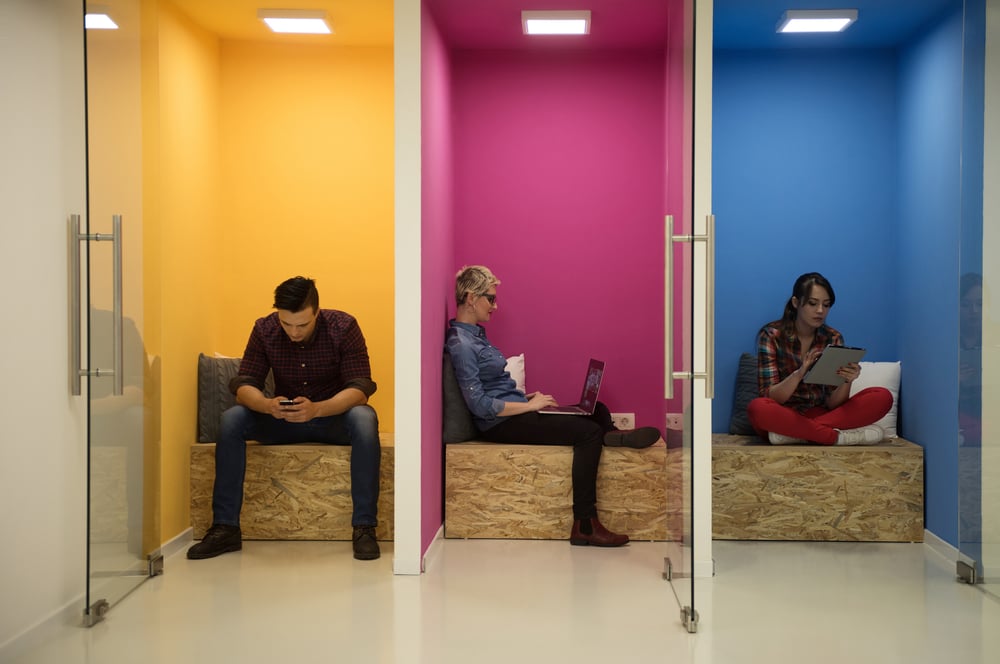
We recently had an insightful panel discussion with Philipp Baumann-Sury, Global UX Research Guild Lead at UBS, on AI-Powered Design Process.
During the talk, an intriguing question popped up, which continues to resonate within me: Is creativity facing extinction in the era of generative solutions?
In a world increasingly propelled by digital acceleration and AI, it’s inevitable that people would be worried about losing a job to technology.
A study conducted by September Gallup demonstrated that 22% of college-educated professionals had apprehensions regarding the potential job displacement for designers due to AI.
AI has gone through a long evolutionary road since the 1950s. However, it's the recent widespread integration across sectors like finance, healthcare, marketing, and education that has thrust it into this spotlight.
The debate surrounding AI's relationship with creativity is multifaceted and complex. On one hand, there's a group that believe AI will be the demise of creativity, while on the other hand, proponents argue for its role as a catalyst for amplifying human creativity.
What is creativity?
Creativity stands as part of human essence, known for its resilience against times of technological disruption and being indispensable for our collective future.
It's a trait so deeply ingrained in our nature that behavioral researchers consider it nothing short of a human masterpiece.
If we look into the etymology of the term "creative," as per Merriam-Webster’s Collegiate Dictionary, we can find its Latin origins, signifying "to beget, give birth to." This highlights creativity as the power to diverge from conventional ideas, rules, and patterns—a hallmark of artistic temperament and a fundamental requisite for producing original works.
At its core, creativity is the art of birthing novel concepts, of charting unexplored territories, and of breathing life into innovation.
Entrepreneurs pioneering groundbreaking strategies, developers crafting experimental code, and designers creating captivating UIs—all rely on creativity, critical thinking and problem-solving skills.
Margaret Boden, in her book " The Creative Mind," delineates two manifestations of human creativity: the personal (p-type) and the historical (h-type).
The former occurs when an individual conceives something for the first time, even if parallel thoughts have occurred independently in others. Meanwhile, historical creativity emerges when a novel idea, previously unimagined, is conceived—a paradigm shift with enduring impact on collective consciousness.
While AI has the capacity to foster both p-type and h-type creativity, its genesis lacks the profound intersection of mind and world that characterizes human innovation. Unlike human cognition, AI algorithms lack inherent connection to reality, relying instead on statistical abstractions of digital data, confining them within the bounds of past precedents.
AI's reliance on historical data creates a perpetual cycle of iteration, where new outputs invariably echo past occurrences. AI-generated content often pales in comparison to the depth and emotional resonance evoked by human creations.
In my opinion, the inherent limitations of AI preclude it from embodying true creativity, fostering instead a landscape of homogenized ideas and stagnated innovation.
Is creativity unique to humans?
When it comes to it, I cannot overlook the intrinsic nature of human cognition—a complex mix of experiences, emotions, and societal influences that defy AI’s algorithmic replication.
While AI has demonstrated remarkable strides in its capabilities, true creativity remains a distant horizon—a frontier yet to be conquered.
As award-winning science fiction author Lavie Tidhar said that AI lacks the essence of creativity intrinsic to human endeavor. The unique perspective, the nuanced emotion, the serendipitous discovery—these are the hallmarks of human creativity that elude the grasp of even the most sophisticated AI systems. In Tidhar's words, "the only thing that you can bring to any kind of art is yourself," highlighting the irreplaceable essence of human creativity.
The essence of human creativity transcends mere productivity or efficiency—it's a journey of exploration, innovation, and self-expression that defies the constraints of algorithmic logic.
Where are we headed from here?
Harvard Business Review believes that there are three plausible scenarios for the future of AI with creativity, each offering a glimpse into the evolution of innovation:
- AI-assisted innovation explosion: This scenario envisions businesses harnessing AI to amplify efficiency and effectiveness across various domains, catalyzing a surge of rapid innovation while complementing, rather than supplanting, human creativity.
- Machines monopolize creativity: In a potential dystopian narrative, unchecked algorithmic dominance threatens to eclipse authentic human creativity, inundating the creative sphere with algorithmically generated content. This inundation could potentially stifle innovation, intensify competition among creators for visibility, and prompt governments and society to grapple with the delicate balance between technical innovation and human ingenuity.
- "Human-made" commands a premium: Conversely, a resurgence of skepticism toward algorithmically generated content could precipitate a renewed appreciation for authentic human creativity. This scenario foresees a premium placed on human-generated content, driven by concerns over accuracy and reliability, and underscored by human creators' unique capabilities, including cultural awareness and adaptability.
The way I see it, the role of AI lies not in usurping human creativity, but in augmenting and enhancing it. By integrating AI into work processes as assistants rather than replacements, we preserve the primacy of human creativity within the creative ecosystem.
As UX/UI designers, it falls upon us to craft human-centric AI interactions that empower human creativity. AI should serve as a collaborative partner—a facilitator of brainstorming sessions, a content collaborator, or a sketching assistant—while leaving creativity in human hands.
Baumann-Sury explains that using AI can also help people who are lacking these creative skills. “As a UX researcher, I lack experience in tasks like building web shops, which falls under the domain of UX designers. However, with AI assisting in the design process, I could potentially become more creative than if I were to tackle it alone. Depending on one's background and skill set, creativity may not be evident in the volume of work produced, but rather in the innovative approaches facilitated by AI collaboration.”
To safeguard creativity and the relevance of designers, I suggest to keep three thingsinto consideration:
- Human input: Initiate the generative process with a human spark of creativity, ensuring that human creativity remains intrinsic to the outcome.
- Contestability: Provide mechanisms for contesting AI-generated outcomes, allowing human judgment to shape the implementation of results and maintain oversight over the creative process.
- Discerning usage: Recognize the limitations of AI and exercise discretion in its application. Some tasks demand the nuanced understanding and emotional intelligence unique to humans, while others may benefit from a balanced fusion of human and AI capabilities.
What can be the correct role for AI?
I believe there exist mundane aspects of a designer's job that could be better off automated.
As Philipp Baumann-Sury said, "I engage in numerous activities that don't directly contribute to the most rewarding parts of my job, rather, they act as distractions. If AI can assist me in eliminating these distractions, it would be even more beneficial, potentially yielding significant advantages."
By relieving humans of these routine responsibilities, AI opens pathways for individuals who may possess extraordinary artistic talent but lack proficiency in these more analytical skills. Thus, AI can serve as an enabler, removing barriers to entry and democratizing access to creative expression.
AI's capacity to process vast quantities of data could open a new era of inspiration and ideation for human artists. By aggregating knowledge from diverse sources and facilitating rapid access to information, AI expands the reservoir of inspiration from which human creators can draw.
An interesting illustration of AI's potential to collaborate creativity with humans is exemplified in Refik Anadol's " Unsupervised" installation. AI was leveraged to interpret two centuries of MoMA art, reimagining the history of modern art. Through this symbiotic interplay between AI-generated imagery and environmental stimuli, Anadol crafted an immersive experience that transcends the confines of conventional artistic expression.
Baumann-Sury suggests that perhaps “Someday, we might awaken to a world where the demand for UX researchers diminishes, as UX designers—genuine creative minds—utilize AI to gather presented data and formulate designs in a collaborative, AI-enhanced process.”
As a facilitator of efficiency, a conduit for inspiration, and a catalyst for collaborative exploration, AI can empower human creators to push the boundaries of artistic expression.
The future of design creativity with AI
As I contemplate about the future between AI and creativity, it becomes evident that the outcomes are far from black and white. AI possesses the potential to both enhance and threaten creativity, contingent upon how we harness its capabilities.
It all lies in striking a delicate balance, utilizing AI as a tool to complement, rather than supplant, our creative activities.
However, amidst the optimism lies a cautionary note. The danger inherent in our escalating reliance on AI-driven creativity is the advent of the so- called g-type (generic) models which will lead to a decrease in cognitive diversity and an increase in cultural tightness. In other words, the more we use AI, the more generic our creativity will become.
In such a scenario, the very essence of creativity stands stifled by a conformity that undermines the richness of human expression.
Yet, history offers a beacon of hope. Just as the advent of the camera failed to extinguish the art of painting, so too can we navigate the transformative landscape of AI, harnessing its potential while safeguarding the sanctity of creativity.
As Ashley Still, an executive at Adobe, said, companies will continue to rely on design-focused staff to steer AI in the right direction. Designers, armed with their innate understanding of ideation and construction, possess the knowledge to extract optimal results from AI-driven tools, ensuring that creativity flourishes even amidst technological change.

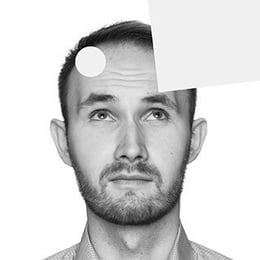

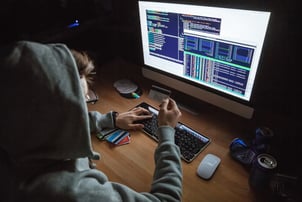


.jpg?width=50&height=50&name=Krawczy%C5%84ski%20Mateusz%201%20(1).jpg)
